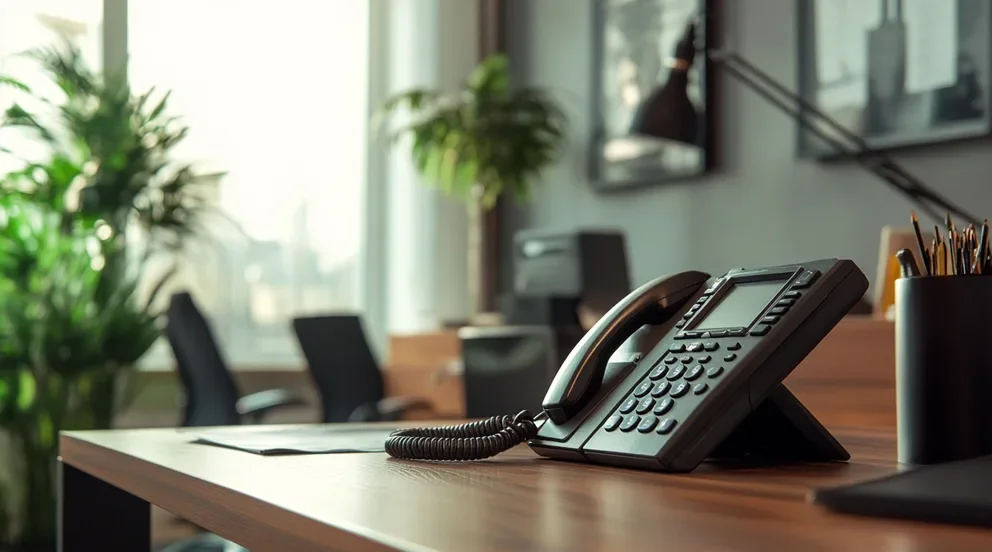The typical cost of dry chemical fire suppression systems can vary significantly due to factors such as the size of the system, the complexity of the installation, and the type of extinguishing agent (e.g. monoammonium phosphate or potassium bicarbonate).
For a basic fire suppression system, the overall costs typically range from $3,000 to $7,000. The initial price usually covers the fire suppression system components, such as the control panel, pressure switches, nozzles, release devices, and the chemical agent. Additional items, such as agent delivery system, plumbing, drop-down racks, hose and nozzle boxes, and the labor associated with the installation, may cost extra.
The cost of the dry chemical extinguishing agent itself will usually be between $2 and $4 per pound, depending on the type and quantity purchased. The amount of agent that is required to adequately protect an area will vary widely, with the average being around 200 to 500 pounds.
For very large commercial applications, like warehouses and production factories, the cost of the fire suppression system may exceed $100,000, as the installation will require a larger network of sprinklers and pipes. In addition, these systems often require more than one type of extinguishing agent, which can significantly increase the overall cost.
All in all, the cost of dry chemical fire suppression systems can vary widely, depending on the particular system’s size, complexity, and extinguishing agents. For a basic system, the typical cost ranges from $3,000 to $7,000, with additional costs for the extinguishing agent and any associated labor costs. For larger commercial systems, the cost can easily exceed $100,000.
What types of extinguishing agents are available for dry chemical fire suppression systems?
Dry chemical fire suppression systems utilize a range of different extinguishing agents to suppress and extinguish a fire. The most common type is mono ammonium phosphate (MAP), which is a white powdery substance that creates a vapor barrier when sprayed, interrupting the chain reaction of a fire.
Potassium bicarbonate is another option, which is used mainly to suppress Class B fires involving flammable liquids. This agent works by creating a fog that cools the burning material, thus isolating the burning liquid from its oxygen supply.
The third most common extinguishing agent for dry chemical fire suppression systems is urea-based chemicals. This is used to extinguish and suppress fires involving combustible metals, such as magnesium, titanium, aluminum, and potassium. The urea-based chemical works by forming a protective crust on the burning material, preventing further oxygen flow.
The use of additional extinguishing agents may be necessary in certain environments. Examples of these may include sodium bicarbonate and potassium chloride, which are commonly used for extinguishing fires involving electrical equipment.
Overall, the most common extinguishing agents used in dry chemical fire suppression systems are mono ammonium phosphate (MAP), potassium bicarbonate, and urea-based chemicals. However, depending on the particular environment and fire risk, other agents like sodium bicarbonate and potassium chloride may also be used.
What factors determine the cost of dry chemical fire suppression systems?
The cost of a dry chemical fire suppression system can depend on several different factors.
First, the size and complexity of the system will influence the overall cost. For larger buildings or more complex systems, the cost will be higher due to the additional components, such as pressure switches, nozzles, release devices, and control panels, as well as the labor required for installation.
Another factor that will affect the cost is the type of extinguishing agent used. Different types of extinguishing agents will cost different amounts, with some being more expensive depending on the quantity purchased. As the amount of extinguishing agent needed to adequately protect an area will vary, this could increase the cost of the system.
Third, there may be additional costs for other items, such as the agent delivery system, plumbing, and hose and nozzle boxes, that could also increase the overall cost of the system.
Overall, the size of the system, the complexity of the installation, the type of extinguishing agent used, and additional items needed can all determine the cost of the dry chemical fire suppression system. Depending on the particular system’s requirements, the total cost could range from $3,000 to over $100,000.
What precautionary measures are needed before installing dry chemical fire suppression systems?
Before a dry chemical fire suppression system is installed, certain precautionary measures must be taken to ensure the safety and effectiveness of the system.
First, an initial survey of the premises should be conducted in order to determine the best location for placing fire extinguishing equipment. This would involve assessing any weak points or vulnerable areas that may require additional protection.
Second, any combustible materials at risk from fire must be removed from the area before installing a dry chemical fire suppression system. Any items left behind could become dangerous projectiles during activation, potentially injuring personnel or damaging equipment.
Third, proper maintenance of existing fire-fighting systems should also be done prior to installation in order to ensure they will operate correctly when needed. This would include scheduling regular inspections, testing of equipment, and replacing any faulty components or worn parts.
Finally, it is important to ensure that all personnel who will be working in the area are properly trained on how to operate the fire suppression system in an emergency. This includes making sure they understand how to activate it and what type of extinguishing agent is being used.
Overall, thorough preparation before installing a dry chemical fire suppression system can help ensure its effective operation when needed. This would involve conducting a survey of the premises, removing combustible materials from the area, ensuring existing systems are properly maintained, and training personnel on the proper operation of the equipment. By taking these precautionary measures beforehand, it can help reduce risks associated with using a dry chemical fire suppression system.
What additional safety measures should be taken when using dry chemical fire suppression systems?
When using a dry chemical fire suppression system, it is important to take certain safety measures in order to protect personnel and property from potential harm.
First, it is essential that any combustible materials are removed from the area before activation of the system. This includes furniture, drapes, carpets, and other items which could become dangerous projectiles during operation or cause blockages in extinguishing agents.
Second, personal protective equipment such as respirators, goggles and gloves should be worn by personnel working in the vicinity of the system at all times. Dry chemical agents can cause irritation to the skin or respiratory system, so it is important that personnel are adequately protected.
Third, any electrical switchboards and equipment in the vicinity of the fire suppression should be turned off before operation. This will help prevent further damage from occurring due to an electrical overload caused by sudden extinguishing agent flow.
Finally, it is also important to make sure only trained personnel operate the system in an emergency situation. This includes understanding how to activate the system correctly and what type of extinguishing agent is being used.
Overall, additional safety measures must be taken when using a dry chemical fire suppression system in order to protect personnel and property from potential harm. This would involve removing combustible materials from the area, wearing protective equipment, turning off electrical switchboards and equipment, and training personnel on the proper operation of the system. By taking these extra precautions beforehand, it can help ensure safe and effective use of the fire suppression system when needed.
What maintenance is required for these systems?
In order to ensure that dry chemical fire suppression systems are effective in an emergency, regular maintenance is required.
First, any parts of the system that may be prone to wear and tear should be inspected regularly. This would include checking for cracks or corrosion on pipes, nozzles, release devices, control valves, and other components. Any faulty parts should then be replaced with new ones immediately.
Second, it is also important to test the system periodically to make sure it is in proper working condition. This would involve running a simulated activation of the system using pressure switches or manual override buttons in order to check its effectiveness and identify any potential problems that may need addressing.
Third, it is also necessary to check the pressure and levels of the extinguishing agent at least once a year. This will help ensure it is correctly filled and does not need topping up or replacing with fresh agents in order to be effective in an emergency situation.
Finally, regular inspections should also be done to make sure all components are operating correctly and no debris has built up around pipes or release devices that could render them ineffective.
Overall, regular maintenance of dry chemical fire suppression systems is essential for their proper operation when needed. This includes inspecting any vulnerable parts for wear and tear, testing the system periodically, checking pressure and levels of extinguishing agents, and doing regular checks on all components. By taking these steps beforehand, it can help ensure a safe and effective use of the fire suppression system when needed.
Are there any special considerations for dry chemical fire suppression systems in certain environments?
Yes, there are certain special considerations that should be taken into account when installing a dry chemical fire suppression system in certain environments.
First, combustible materials such as furniture and drapes should be removed from the area before installation and not allowed to return afterward. This is because they can become dangerous projectiles during activation and cause blockages for extinguishing agents.
Second, any electrical equipment in the vicinity of the system should also be turned off prior to operation. This will help prevent damage caused by an electrical overload due to sudden extinguishing agent flow.
Third, it is important to understand what type of extinguishing agent is being used and how it may interact with sensitive surfaces or materials in the environment. For instance, dry chemical agents can cause damage to certain items such as electronics or medical equipment, so it is important to be aware of this before installation.
Finally, personnel should also be trained on the proper operation of the system in order for it to be effective. This includes understanding how to activate the system correctly and what type of extinguishing agent is being used.
Overall, there are certain special considerations that should be taken into account when installing a dry chemical fire suppression system in certain environments. This would involve removing combustible materials from the area, turning off electrical equipment prior to operation, understanding what type of extinguishing agent is being used, and training personnel on the proper operation of the system.
Are there any codes or regulations that need to be followed when installing dry chemical fire suppression systems?
Yes, there are certain codes and regulations that should be followed when installing dry chemical fire suppression systems.
First, the NFPA 17A Standard for Dry Chemical Extinguishing Systems should be consulted as it outlines the requirements for various types of fire suppression systems including installation and maintenance.
Second, any local building codes may also need to be taken into account as they could contain specific requirements for the type of system being installed or additional safety precautions that must be met in order to comply.
Third, a visual inspection should also be done before installation to make sure all components meet necessary standards and no damage has occurred during transport or storage. This includes checking pipes, nozzles, release devices, control valves, and other components for cracks or corrosion.
Finally, it is important to make sure that all personnel who will be operating the system are properly trained on its use and understand how to activate it correctly in an emergency situation. This should include a review of the systems’ operating manual as well as hands-on practice with a simulated system.
Overall, there are certain codes and regulations that must be followed when installing dry chemical fire suppression systems in order to ensure their proper operation in an emergency situation. This includes consulting NFPA 17A Standard and any local building codes, doing a visual inspection of all components, and training personnel on the proper use of the system.
What are the most common causes of a system failure?
The most common causes of a system failure with dry chemical fire suppression systems include inadequate maintenance, incorrect installation, and lack of personnel training.
First, proper maintenance is essential in order to ensure the system will operate correctly in an emergency situation. This includes checking pipes, nozzles, release devices, control valves, and other components for cracks or corrosion; testing the system periodically; and checking pressure and levels of extinguishing agents at least once a year. If these steps are not taken then the system may malfunction when needed which could lead to serious consequences.
Second, incorrect installation can also result in a faulty system as any damage caused during transport or storage may go unnoticed until it is too late. Therefore it is important to make sure all components are installed correctly and that the system is tested afterwards for proper operation.
Third, personnel should also receive adequate training on the use of the system in order to ensure its effective activation during an emergency. This includes understanding how to activate it correctly and what type of extinguishing agent is being used. If personnel are not properly trained then they may fail to operate the system when needed which could lead to serious damage or injury.
Overall, inadequate maintenance, incorrect installation, and lack of personnel training are the most common causes of system failure with dry chemical fire suppression systems. It is therefore essential that these steps are taken before installation in order to ensure a safe and effective use of the system when needed.



